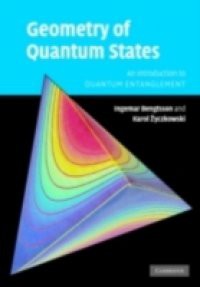Quantum information theory is at the frontiers of physics, mathematics and information science, offering a variety of solutions that are impossible using classical theory. This book provides an introduction to the key concepts used in processing quantum information and reveals that quantum mechanics is a generalisation of classical probability theory. After a gentle introduction to the necessary mathematics the authors describe the geometry of quantum state spaces. Focusing on finite dimensional Hilbert spaces, they discuss the statistical distance measures and entropies used in quantum theory. The final part of the book is devoted to quantum entanglement - a non-intuitive phenomenon discovered by Schrodinger, which has become a key resource for quantum computation. This richly-illustrated book is useful to a broad audience of graduates and researchers interested in quantum information theory. Exercises follow each chapter, with hints and answers supplied.

